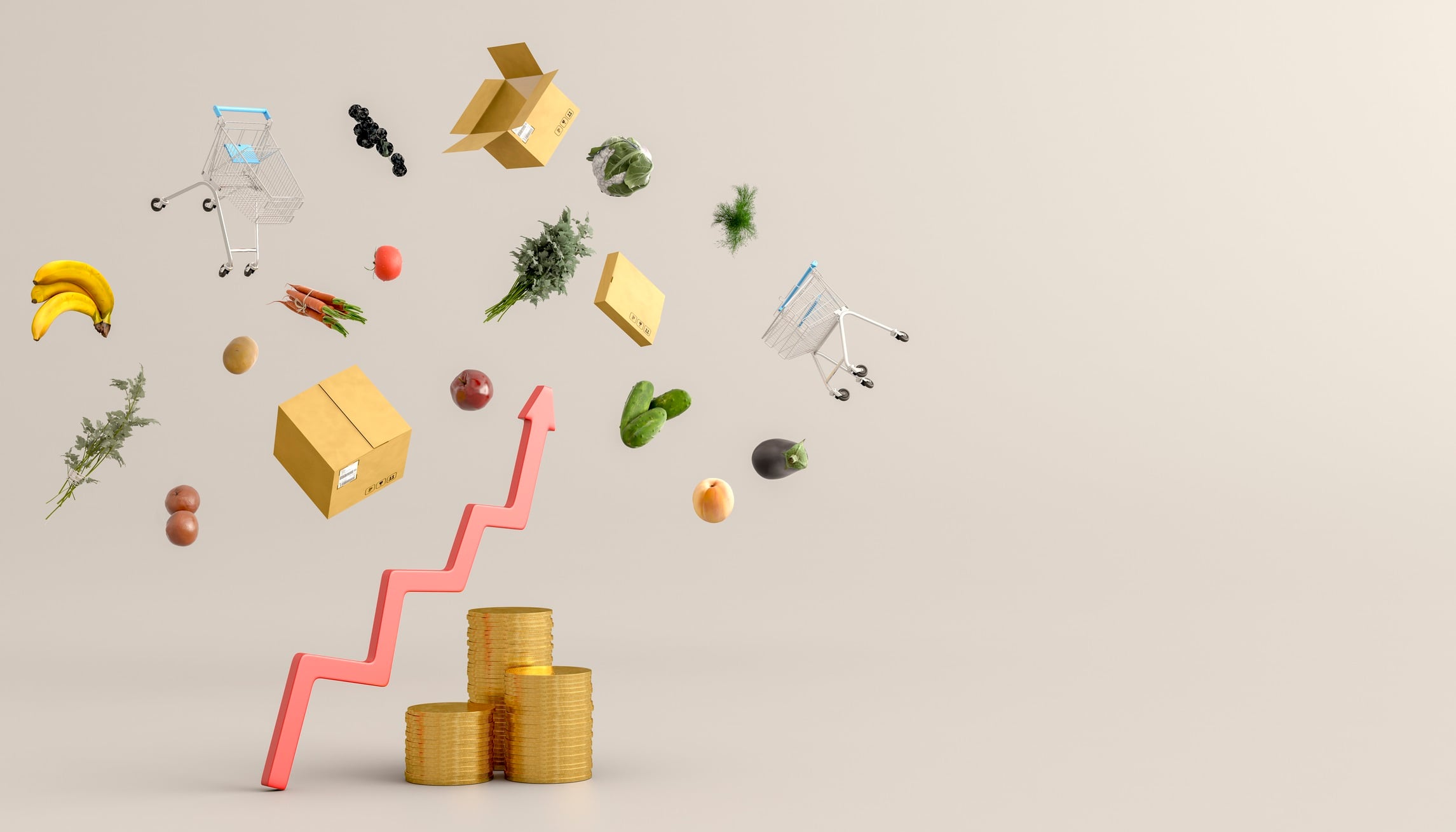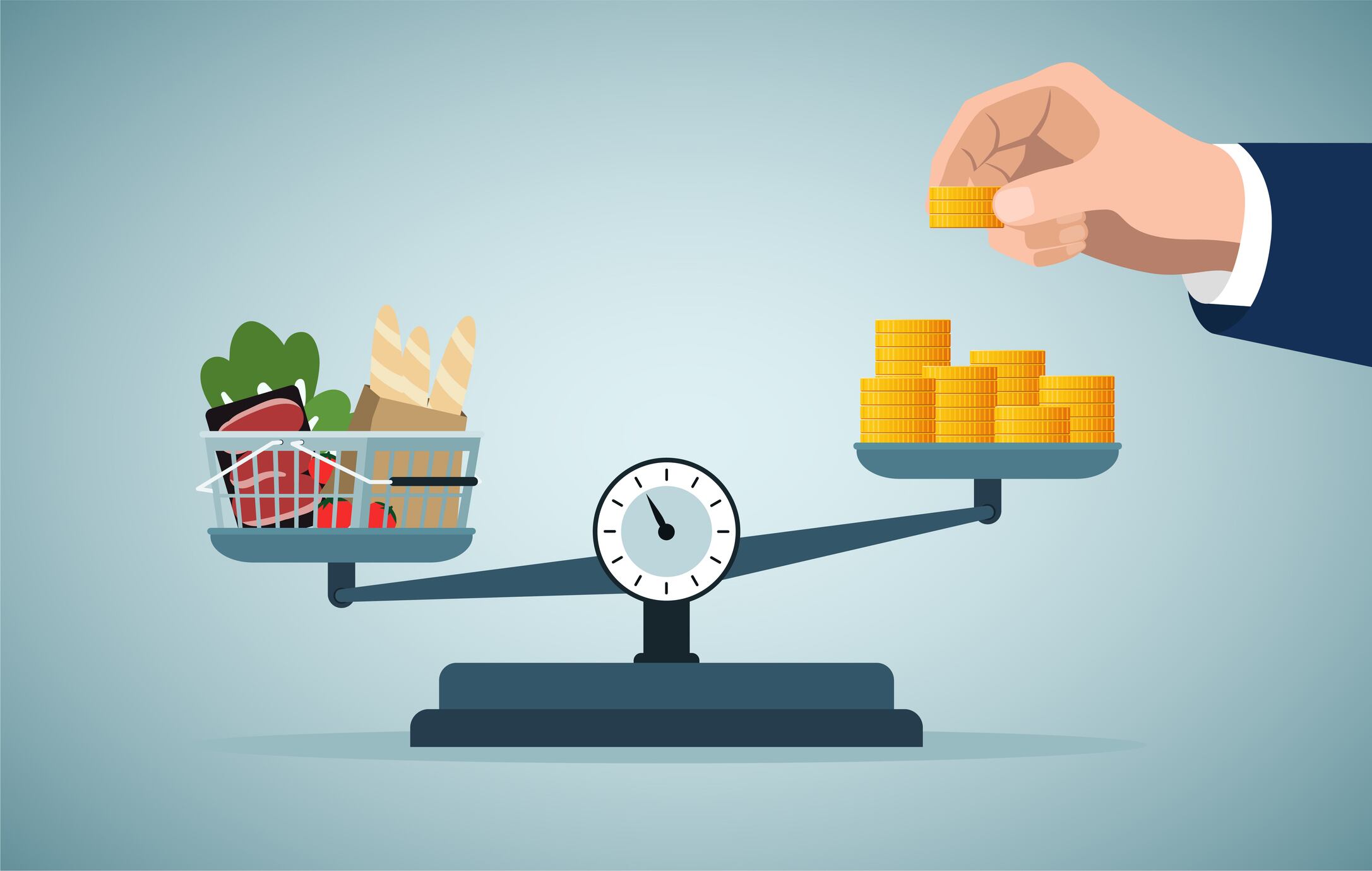The rate of price rises held steady at 3.8% in the 12 months to August 2025, remaining unchanged from July 2025.
However, food and drink continues to drift upwards, reaching 5.1% in August up from 4.9% in July.
This represents the fifth consecutive increase in the annual rate and the highest recorded since January 2024. It does, however, remain below the peak seen in early 2023.
On a monthly basis, food and non-alcoholic beverage prices rose by 0.4% in August 2025, compared with a rise of 0.2% in 2024.
Where is inflation hitting hardest?
Among the 49 food and drink categories ONS reports on, five saw inflation hit double digits.
- Beef and veal at 24.9%
- Butter at 18.9%
- Chocolate at 15.4%
- Coffee at 15.4%
- Whole milk at 12.6%
Prices fell the fastest for olive oil (-12.5%), flours (-5.9%), sugar (-3.8%), and pasta (-2.8%). While the price of olive oil is falling year-on-year, it’s still over 120% higher than it was at the start of 2020.
Government policy to blame
Karen Betts, chief executive at The Food and Drink Federation (FDF), said the rising food prices are “concerning”, particularly when commodity and energy prices have remained fairly stable.
The FDF pointed the finger at government regulation and policy decisions, including National Insurance Contributions and Extended Producer Responsibility (EPR) as a main driver for hiking prices. The uptick in NIC is expected to cost the food and drink sector an annual £410 million, whilst EPR estimates come in around £1.1 billion.
“There are still notable pressures on coffee, cocoa, olive oil and dairy prices, but otherwise the continued rise is explained by regulatory and tax costs. This year’s increases to employer National Insurance Contributions, the new packaging tax, business rates rises and the cost of border checks including to Northern Ireland are heaping costs on our sector,” Betts said.
What action is needed?
“We need government to bring down the cost of regulation – so it’s better designed, easier to implement, and better sequenced so it doesn’t all land at once on companies struggling to cope.
“Manufacturers are looking to the Chancellor in the Budget to ensure we have proper policies and incentives in place to drive productivity growth across food and drink, to offset regulatory and tax costs, and to boost the employment and prosperity that food and drink manufacturing provides in communities up and down the country. She [Rachel Reeves] must resist bringing in new costs to ensure the UK is an attractive place to invest.”
The FDF expects food and non-alcoholic drink inflation to keep rising, having just adjusted its original projections upwards, anticipating that it could rise to 5.7% by December 2025.
Jim Mellon, executive chairman at Agronomics which supports and finances start-ups and scale-ups, agreed that price volatility is “set to intensify over the festive period” and will squeeze household budgets further, “forcing brands to shrink pack sizes, with smaller chocolate bars already appearing on shelves”.
Commenting on a possible remedy, he added: “To avoid a winter of consumer discontent, manufacturers and governments must look at new ways to boost supply chain security. We’re on the cusp of a revolution in food production, one where we can bolster traditional farming with ingredients made in bioreactors here in the UK.
“If we can expedite this process further, with more investment and a streamlined regulatory process, then we will start to see the weight lifted from the shoulders of the world’s food system, and tackle the ongoing food price crisis head-on.”





